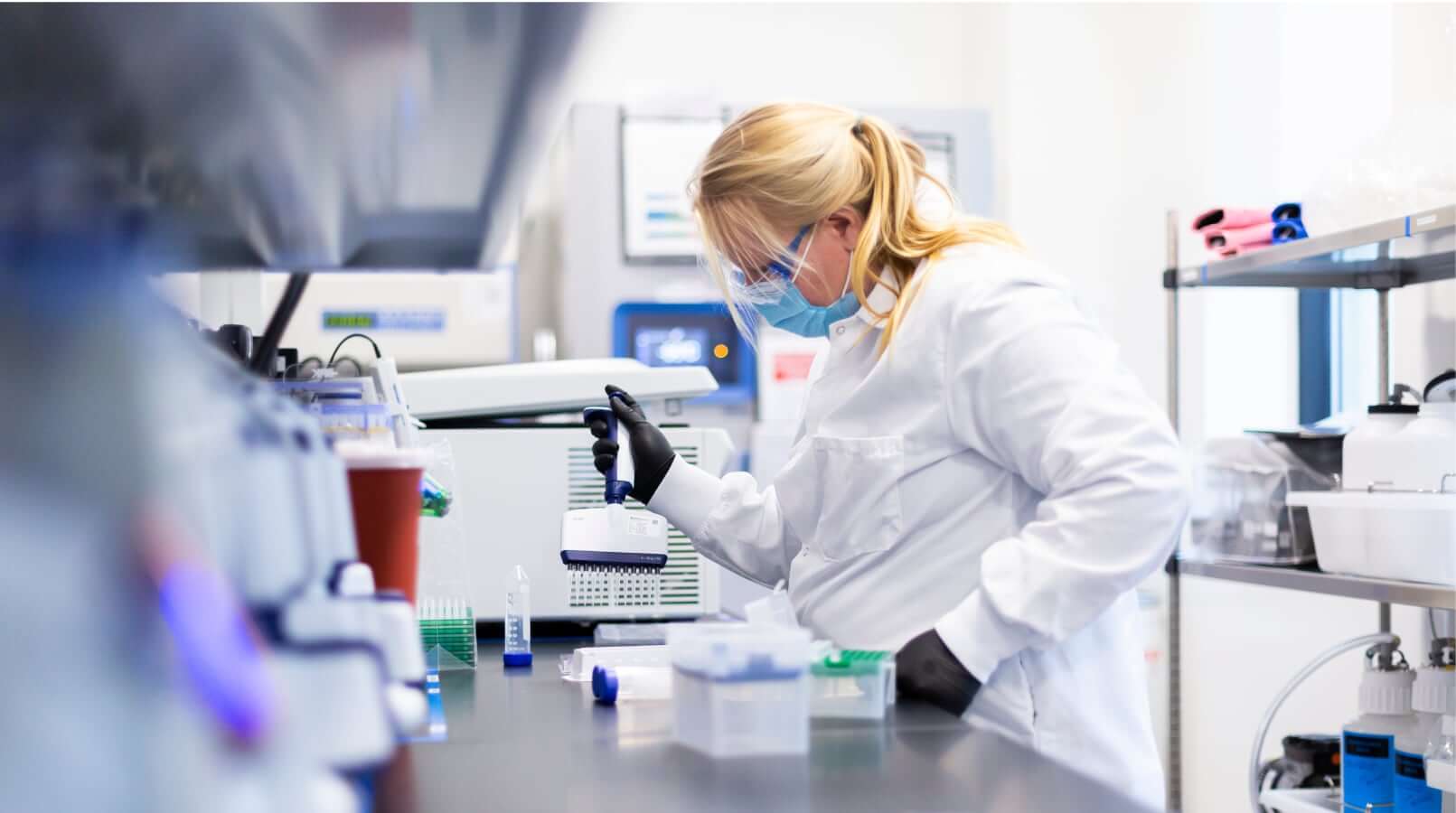The power of mRNA
At Moderna we are exploring the potential of mRNA science to help create a new generation of medicines for patients.

mRNA could possibly revolutionise medicine
Scientists have been studying mRNA for decades. And mRNA vaccines are just the start.²
It’s all about proteins
An mRNA can teach the body how to make a specific protein that can help your immune system prevent or treat certain diseases.¹⁻²
You are made of proteins
Your body contains trillions of cells, the basic units of life. And every cell contains proteins.³⁻⁴
What proteins do
Proteins carry out a variety of functions within the body from processing signals to carrying oxygen. The body makes around 20,000 different types of proteins in our body.⁵
How proteins work
For example, insulin is a protein that helps the body control sugar levels in the blood. In people with Type I diabetes, their body doesn't make enough insulin.⁶
Why proteins are important
When the body doesn’t make the right amount or type of protein, it can cause conditions like cancer or metabolic diseases.⁷
Why we focus on proteins
Proteins are essential for maintaining health and preventing disease.⁸
Your cells are protein factories
Proteins are made in a process called protein synthesis. And that's where mRNA comes in.⁹
What is mRNA?
Messenger RNA – or mRNA – exists in all of the cells in your body. It is an essential component of all living organisms and has been in cells for billions of years.³
What does it do?
Just like its name suggests, mRNA is a messenger. It interacts with other components in cells that help create proteins.¹⁰
How does it help make a protein?
Each mRNA carries instructions to make a specific protein. These instructions are like a “blueprint”. mRNA delivers these instructions, and cells put the protein together.³
What happens after a protein is made?
Once its job is done, an mRNA is broken down by the body. It doesn’t stick around for very long.³
mRNA teaches the body how to make its own medicine
Scientists design each mRNA to give cells directions to make a particular protein.²
1. Making an mRNA medicine
To protect the mRNA and help deliver it into cells, the mRNA is wrapped with lipids, or fats.¹¹
2. Deliver mRNA into the body
mRNA vaccines are given as an injection. Future mRNA treatments might be delivered by an infusion.¹
3. Creating the right protein
Once the vaccine is delivered, the body takes over and makes the protein according to the mRNA’s instructions.³
4. Breaking it down
mRNA doesn’t stay in the body very long once its job is done. And it does not cause permanent changes or alter DNA.²⁻³
¹Pardi N, Hogan MJ, Porter FW et al. mRNA vaccines — a new era in vaccinology. Nat Rev Drug Discov 2018; 17; 261–279. Available at: https://www.nature.com/articles/nrd.2017.243. Last accessed November 2025.
²Centers for Disease Control and Prevention. Understanding How Covid-19 Vaccines Work. May 2023. Available at: https://www.cdc.gov/coronavirus/2019-ncov/vaccines/different-vaccines/how-they-work.html Last accessed November 2025.
³Riggs P. What is mRNA? The messenger molecule that’s been in every living cell for billions of years is the key ingredient in some COVID-19 vaccines. The Conversation. 2021. Available at: https://theconversation.com/what-is-mrna-the-messenger-molecule-thats-been-in-every-living-cell-for-billions-of-years-is-the-key-ingredient-in-some-covid-19-vaccines-158511. Last accessed November 2025.
⁴Roy AL, Conroy RS. Toward mapping the human body at a cellular resolution. Mol Biol Cell 2018;29(15):1779–1785. Available at: https://www.ncbi.nlm.nih.gov/pmc/articles/PMC6085824/. Last accessed November 2025.
⁵Ahlgren N. What is a protein? A biologist explains. The Conversation 2021. Available at: https://theconversation.com/what-is-a-protein-a-biologist-explains-152870. Last accessed November 2025.
⁶National Institute for Health and Care Excellence. What is Insulin? April 2023. Available at: https://cks.nice.org.uk/topics/insulin-therapy-in-type-1-diabetes/background-information/what-is-insulin/. Last accessed November 2025.
⁷Zhou Y, et al. Proteomic signatures of 16 major types of human cancer reveal universal and cancer-type-specific proteins for the identification of potential therapeutic targets. J Hematol Oncol 2020; 13:170. Available at: https://jhoonline.biomedcentral.com/articles/10.1186/s13045-020-01013-x. Last accessed November 2025.
⁸Wu G. Dietary protein intake and human health. Food Funct 2015;7:1251–1265. Available at: https://pubs.rsc.org/en/content/articlehtml/2016/fo/c5fo01530h. Last accessed November 2025.
⁹Ribosomes, Transcription, and Translation. Scitable by Nature education 2014. Available at: https://www.nature.com/scitable/topicpage/ribosomes-transcription-and-translation-14120660/. Last accessed November 2025.
¹⁰National Human Genome Research Institute. Messenger RNA (mRNA) National Human Genome Research Institute 2023. Available at: https://www.genome.gov/genetics-glossary/messenger-rna. Last accessed November 2025.
¹¹Rosa S, et al. mRNA vaccines manufacturing: Challenges and bottlenecks. Vaccine 2021;39(16): 2190–2200. Available at: https://www.ncbi.nlm.nih.gov/pmc/articles/PMC7987532/#:~:text=mRNA%20vaccine%20structure,vivo%2C%20using%20the%20cell%20machinery. Last accessed November 2025.